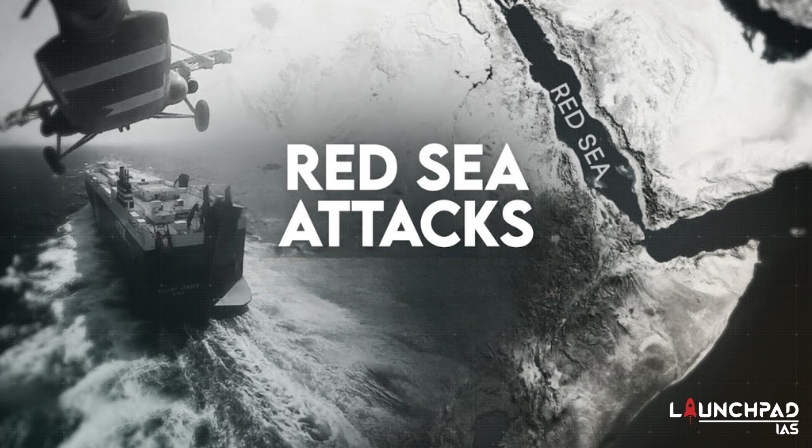Recent context:
Amid the recent attacks on ships passing through the Red Sea trade route in West Asia, one ship was on the way to India.
Who are Houthis?
- The roots of the Houthi movement can be traced to “Believing Youth” (Muntada al-Shahabal-Mu’min), a Zaydi revivalist group founded by Hussein al-Houthi and his father, Badr al-Din al-Houthi, in the early 1990s.
- Badr al-Din was an influential Zaydi cleric in northern Yemen. Inspired by the Iranian revolution of 1979 and the rise of Hezbollah in southern Lebanon in the 1980s, Badr al-Din and his sons started building vast social and religious networks among the Zaydis of Yemen, who make up roughly one-third of the Sunni-majority country’s population.
- But when the movement turned political and started attacking the “corrupt” regime of Ali Abdullah Saleh (in Yemen) and his support for the US’ war on terror, it became a thorn in Saleh’s side.
- They called themselves Ansar Allah (Partisans of God), mobilizing tribesmen in the north against the government.
- In 2004, Saleh’s government issued an arrest warrant against Hussein al-Houthi. He resisted the arrest, starting an insurgency.
- In September 2004, the government troops attacked the rebels and killed Hussein. Since then, the government launched multiple military campaigns in Sa’dah, the Zaydi stronghold, to end the resistance, which was locally called the Houthis movement, after their “martyred” leader.
- But it only strengthened the Houthis, who, by 2010, when a ceasefire was reached, had captured Sa’dah from the government troops.
Red Sea Attacks
- The Red Sea attacks have been carried out by Yemen-based Houthi rebels, who have been in a civil war with the Yemeni government for about a decade. They say the attacks are to protest Israel’s military offensive in Gaza.
- While the US-led maritime security coalition has swiftly announced countermeasures, indicating the importance of the route for world trade, the recent shipping crisis in the Red Sea is not the only pain point here.
- Two crucial choke points – the Suez Canal and the Panama Canal – threaten to disrupt over a third of global trade.

What do the ongoing Red Sea and Panama Canal crises mean for world trade?
- A disruption in maritime transport is a crucial concern for the world economy, as over 80 percent of the global goods trade is carried by sea. The share of trade via sea is much higher for developing countries such as India.
- Currently, two important shipping routes are facing blockages. While the Bab-el-Mandeb Strait that leads to the Suez Canal in the Red Sea region connects Asia to Europe, the 100-year-old Panama Canal connects the Atlantic and Pacific Oceans.
- Both these routes are among the busiest in the world and a blockage results in forcing global shipping lines to take longer alternate routes, pushing up freight rates.
- The disruption at the Red Sea route, for instance, is estimated to push the prices of Indian agricultural products by 10 to 20 percent, as shipments would be routed through the Cape of Good Hope.
- This comes at a time when much of the West is witnessing higher interest rates to curb inflation. Higher prices could further fuel demand concerns for global and Indian exporters.
- Concerns arise for Indian oil importers and exporters of key commodities like basmati and tea due to disruptions in this critical trade route.
Why did Hamas attack Israel?
The Israel-Hamas conflicts have multiple underlying reasons and triggers. Here are some of the key factors that contribute to the hostilities between Israel and Hamas:
- Territorial Disputes: The core issue in the conflict is the territorial dispute over land in historic Palestine, particularly in Gaza, the West Bank, and East Jerusalem. Both Israel and Hamas lay claim to these areas, leading to ongoing tensions and conflicts.
- Gaza Blockade: Israel has maintained a blockade of the Gaza Strip since 2007, when Hamas took control of the territory. This blockade has severely restricted the movement of people and goods in and out of Gaza, leading to economic hardship and humanitarian concerns.
- Rocket Attacks and Security Concerns: Hamas, which governs the Gaza Strip, has frequently launched rocket attacks into Israeli territory. Israel sees these attacks as a threat to its security and responds with military operations.
- Jerusalem and Holy Sites: Disputes over access to and control of religious sites in Jerusalem, particularly the al-Aqsa Mosque, have led to tensions and violence. Events in Jerusalem can escalate into broader conflicts.
- Political Rivalry: Hamas and Fatah, the two main Palestinian political factions, have conflicted for years. This political rivalry has contributed to the division between Gaza and the West Bank, with Hamas controlling Gaza and the Palestinian Authority led by Fatah governing the West Bank.
Related Links:


